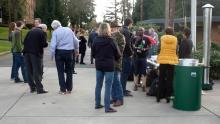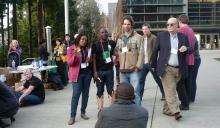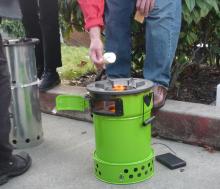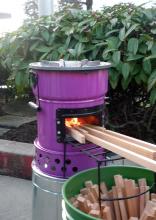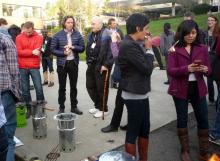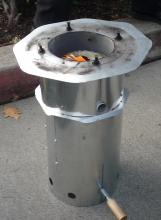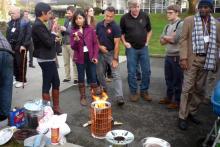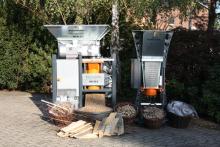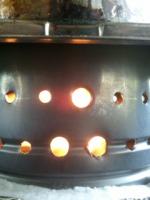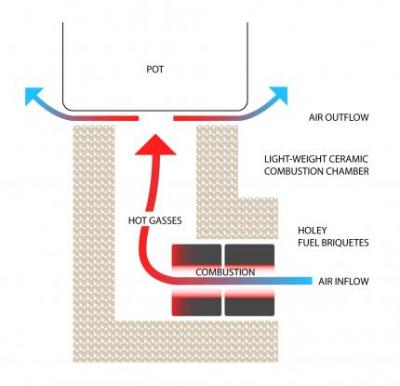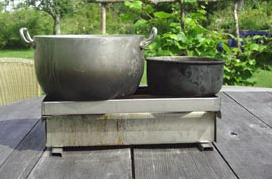ETHOS Cooking Stoves Conference in Kirkland, Washington January, 2015.
for more about the next ETHOS Conference see http://www.ethoscon.com/
The ETHOS conference brings together people involved in stove design, dissemination, and testing from Universities, Government, and Non Government organizations, and has themes around the topics of improving cook stove design and performance, reducing emissions, and improving stove adoption, but listening to the needs of the people using the stoves. It ends with the 'lighting of the stoves' which is a demonstration of some of the cooking stoves that people have talked about in the conference.
In addition to capturing photos of the stoves, this year I captured a few pictures of the crowd of attendees comparing stove designs, toasting marshmallows, etc.
The big green stove is the InStove institutional rocket stove http://instove.org/
The lovely people taking pictures were from CREEC ( Energy and Energy Conservation ) which presented a great analysis of current cooking stove tests and some insights to improve them. They also noted that fans typically fail in Uganda, and there are no fans available to replace them.
For more about CREEC see http://creec.or.ug
StoveTec and Aprovecho presented some interesting innovations in stove design that they hope to field test in the coming year. The light green stove has an insulated top door for adding fuel to their TLUD style stove. The purple stove is their rocket stove that has been optimized for improved particulate emissions, with an improved set of colors.
For more about StoveTec stoves see http://stovetecstore.net/
for more about Aprovecho and stove testing see http://www.aprovecho.org/lab/index.php
I was happy to get a good picture of Christa Roth of GiZ her handbook of MicroGasification is outstanding, to download a copy go to https://energypedia.info/wiki/File:Micro_Gasification_2.0_Cooking_with_g...

